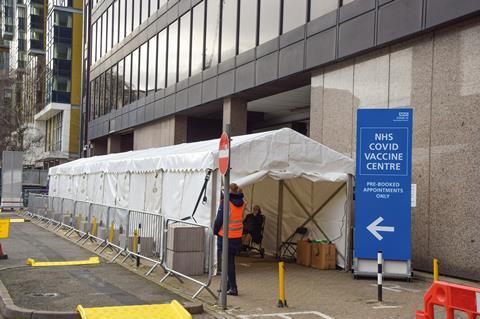The low down
The sums at stake in pensions litigation are often huge and the consequences for policyholders can be life changing. Since Robert Maxwell raided the Mirror Group’s pension fund to cover business losses and subsidise his lavish lifestyle, successive governments have responded to pensions scandals by adding to the legal, regulatory and governance requirements that aim to protect policyholders. The courts have added to the weight and complexity of pensions problems that employers and pension scheme trustees must resolve. Then there are the scammers conning policyholders out of their pension pots, and the expected economic impact of Brexit and Covid-19. Small wonder that pensions litigators say they are busier than ever.
Pensions disputes increase when the economy dips. And for many, the economic environment since last March has been very tough. Helena Berman, who heads the pensions dispute resolution team at Stephenson Harwood, says it has been ‘busier than ever’.
Work includes what Berman defines as ‘the more traditional’ pensions matters such as professional negligence, construction and rectification claims; challenges to the exercise of discretion by trustees; investigations by The Pensions Regulator (TPR); contract disputes with advisers and suppliers; and cases concerning the ability to change the index used to calculate the indexation or revaluation of pension benefits.
She points to a flurry of claims against law firms or other professional advisers for alleged failures to ‘equalise’ men’s and women’s retirement ages, despite the fact that the more straightforward direct claims are generally now out of time under the Limitation Act 1980. ‘But this does not appear to have diminished trustees’ and companies’ appetites for bringing such actions via “loss of chance” claims,’ she says.
It is clear from the past few years that there is no let-up in the number of complex legal issues and disputes to which UK pension schemes can give rise
Samantha Brown, Herbert Smith Freehills
Geoff Egerton, managing associate at Linklaters, points to a big increase in construction and rectification cases (which seek clarification on scheme documents) and also cases on the scope of trustees’ powers. This has been ‘motivated by a greater focus on scheme governance as well as employers exploring ways to manage costs. In some cases historical issues come to light as part of risk reduction exercises such as at the benefit specification stage of a buy-out’.
Many interpretation and trustee powers cases have involved the question of whether a scheme can switch the index applied under its rules from the Retail Price Index (RPI) to the lower rate of the Consumer Price Index (CPI) to reduce their liabilities.

Although these cases have been around since 2011 when the government announced a switch to use CPI as the main measure of inflation, they continue to arise, according to Egerton. Recent examples include the British Airways case concerning the proper exercise of trustee powers, and other cases looking at that what the rules regarding the correct index mean or what they should have said. These include High Court judgments last year in Univar UK Ltd v Smith and Ors; Ove Arup v Arup UK Pension Scheme; and Britvic plc v Britvic Pensions Ltd (an appeal is to be heard this month).
Suzanne Duff, partner at Womble Bond Dickinson, says that while the professional negligence actions have more recently tended to settle before trial, most pensions litigation that reaches trial stage concerns the interpretation of schemes’ rules. Referring to 2012’s Danks v QinetiQ Holdings Ltd, she says: ‘Despite the first RPI/ CPI cases being heard almost a decade ago, we are still regularly asking the court to rule on whether it is possible for schemes to change from RPI to CPI.’
In addition to the Britvic appeal, this summer the High Court will be asked to rule on whether a change to the scheme rules allowing the employer to change the index in the Mitchells & Butlers pension scheme in 1995 was a valid change, Duff notes, adding: ‘Given the lack of consistency in the answer to the question can CPI replace RPI in pension schemes rules, I can only see more clients asking the court to rule on this cost-sensitive issue.’
‘We are also aware that a number of schemes are seeking to judicially review the government’s decision to align RPI and CPI in future,’ Egerton says. Last November, the UK Statistics Authority confirmed that it would reformulate RPI and align it with CPI.
The increase in interpretation cases is not all about RPI. ‘There has also been a steady stream of cases dealing with the rectification of pension scheme documentation, where huge sums are often at stake all because of the slip of a pen or a moment of inattention,’ says Peter Murphy, head of pensions and investment litigation at specialist pensions firm Sackers. ‘Although many of these cases have been resolved on a summary judgment basis, Univar UK bucked that trend with a lengthy contested hearing.’
Errors
Isabel Nurse-Marsh, Pinsent Masons’ head of pensions litigation, reports growth in applications to the High Court to correct errors in pension scheme documents because ‘a small error can have huge financial consequences’. In Univar UK, in which her firm acted, the error would have cost the client £30m. The High Court granted the rectification.
‘We are also aware of several other recent interpretation cases which either have already settled or are at early stages and are not public,’ Egerton says. ‘These sorts of cases in turn can give rise to professional negligence claims if historical errors by advisers have been identified.’
Samantha Brown, head of employment, pensions and incentives at Herbert Smith Freehills, says: ‘It is clear from the past few years that there is no let-up in the number of complex legal issues and disputes to which UK pension schemes can give rise.’ There is no better illustration of this than the two ground-breaking Lloyds judgments on historical gender discrimination in 2018 and 2020 that extended the European Court of Justice’s age-equalisation 1990 decision in Barber to the payment of guaranteed minimum pensions (GMPs).
‘This issue had lain dormant for nearly 30 years,’ Brown says. ‘It was not until the 2018 judgment that the courts confirmed that UK pension schemes are required to equalise male and female members’ benefits for the inequalities arising from the provision of GMPs.’
GMPs were historically provided by thousands of defined benefit (DB) schemes to members in lieu of a part of an individual’s state pension. After the second judgment last November, pension schemes are having to review member records and payments going back decades.
According to Duff, most clients in the
pensions industry are still trying to implement the decision in the first Lloyds case, let alone the second one. ‘Although both judgments did provide some answers, most pensions lawyers agree that many questions remain unanswered, such as how does a money purchase scheme fund any shortfall, what is the position on bulk transfers where members provided consent, and what is the position if the original pension scheme is now wound up.’
The road ahead
Brexit and Covid-19 have impacted ‘very little at the moment, but longer-term will give rise to more litigation about how legislation has been applied post-Brexit,’ predicts Pinsent Masons’ Isabel Nurse-Mash. An example could be if UK pension providers deal with pensions savers in the EU without complying with local laws.
As for Covid-19, Hogan Lovells’ Angela Dimsdale Gill says that because it has had a negative effect on almost all business sectors, companies will find funding their pension schemes even more challenging than previously.
The Pensions Regulator has powers to act where an employer with a defined-benefit scheme (or those associated with it) tries to avoid pension obligations, and the Pensions Schemes Act 2021 expands the grounds on which the regulator can impose contribution notices. Yet, Dimsdale Gill says: ‘A target’s financial circumstances is something the regulator is bound by statute to take into account before imposing liabilities on targets under the moral hazard regime. The plain truth is that many of those targets are not in the same financial circumstances as they were a year ago.’
Stephenson Harwood’s Helena Berman observes that as a result of the lockdowns and other Covid-19 measures, pensions schemes have seen pressures on their investments, growing deficits and in some cases postponed or suspended contributions from their employers. Litigation is traditionally counter-cyclical, and with these pressures on funds have come more claims and litigation, she says, adding that ‘there is also more and more scrutiny on trustees, particularly professional trustees, which has compelled them to pursue claims where they exist’.
Fraud
Another trend is victims seeking redress for being encouraged to transfer out pensions savings as part of fraudulent schemes.
‘We’ve seen a significant increase in the number of claims management companies bringing complaints against schemes on behalf of members, where the members have transferred out benefits to what turned out to be a scam,’ says Claire Carroll, head of pensions disputes at Eversheds Sutherland. If the complaint is upheld, CMCs can take up to 30% of the damages awarded to any member, which can be a significant amount of money for a member to pay out of the compensation, she adds.
‘I’d encourage any member with a complaint not to use CMCs, as the whole ethos behind Internal Dispute Resolution Procedures brought in by the Pensions Act 2004, and indeed the Pensions Ombudsman, is to provide a complaint forum that is easily accessible to members,’ Carroll advises.
Nurse-Marsh points to last year’s £350m test case in the High Court between the Pension Protection Fund (PPF) and Dalriada to determine the availability of the Fraud Compensation Fund (run by the PPF) to occupational pension schemes that have been used as scam vehicles. ‘It was a significant stepping stone on the path towards seeing genuine recompense for scam victims,’ says Nurse-Marsh, whose firm acted for independent trustee Dalriada.
The past year has seen an increase in pension liberation scams, where individuals transfer their benefits under the influence of fraud. Berman says that it can be ‘extremely difficult to recover these funds’. For example, the firm’s pensions law group, which sits within the newly formed employment, pensions and private wealth department, acts for clients who transferred their pension funds into a fraudulent offshore investment vehicle through a transfer to an apparently legitimate registered UK pension scheme with offshore investments.

The Pensions Ombudsman has been adjudicating complaints relating to pension transfers and scams, and TPR has also been flexing its muscles. In March it succeeded in extraditing an alleged scammer from Spain to face a criminal prosecution in the UK in connection with a £13.7m fraud. And in January 2020 former BHS owner Dominic Chappell was ordered to contribute £9.5m into two pension schemes connected to the collapse of the high street chain.
This is also evidence, according to Carroll, that TPR, which has both criminal and regulatory enforcement powers, is ‘an increasingly muscular and well-resourced enforcement authority’.
Angela Dimsdale Gill, partner at Hogan Lovells, notes that the regulator is using its powers under the ‘moral hazard’ legislative regime. The Pensions Act 2004 gave it anti-avoidance powers to prevent an em ployer or its owners from avoiding their responsibilities to a scheme that is in deficit by offloading it to the PPF. The regulator can issue ‘contribution notices’ to require the ‘target’ of its anti-avoidance action to make a cash payment to a scheme or to the PPF.
Another key example is the high-profile Silentnight case, which Hogan Lovells handled for the ‘targets’ of the investigation. The case, which started in 2011, was settled in March when TPR announced that it had agreed a £25m settlement with HIG Group, the owners of the bed manufacturer Silentnight. The regulator had alleged that the US private equity group ‘deliberately brought about the unnecessary insolvency of the original Silentnight Group to buy its business out of administration, while leaving its defined benefit pension scheme behind’.
The increased civil powers granted to TPR has caused concern, but the introduction of criminal offences has caused significant unease
Suzanne Duff, Womble Bond Dickinson
More power
The Pensions Schemes Act 2021 expands the powers of TPR, with two new criminal offences, tougher civil sanctions of up to £1m and strengthens its moral hazard and information-gathering powers.
‘The increased civil powers granted to TPR has caused concern, but the introduction of criminal offences has caused, quite rightly in my view, significant unease,’ says Duff. ‘The potential scope of the criminal powers are wide and the reassurance that they will be used sparingly and only to target “particularly bad behaviour” is not reflected in the legislation.’ Duff argues that guidance on how TPR will use its new powers, issued for consultation in March, is ‘too vague’.
The new, tougher approach to pensions regulation is designed to deter employers from abandoning pension responsibilities. ‘The regulator was slow to show its teeth when given its current moral hazard and scheme funding powers in 2006, and it was criticised in handling high-profile cases such as BHS,’ Duff notes. ‘But due to the higher standard of proof required in criminal litigation I’d expect it to consider exercising the full force of its civil powers before looking to prosecute in the criminal courts.’
The act introduces two major new criminal offences relating to DB pension schemes: avoidance of employer debt, and conduct risking accrued scheme benefits. It will affect all those involved with a DB scheme – not just trustees and employers, but also professional advisers.
Nurse-Marsh says: ‘Nervousness about the offences will lead to more parties taking legal advice. Regulatory guidance can only go so far in providing reassurance. Litigators will be involved in ensuring that parties understand the risks, and they can help with appropriate precautionary steps, such as making sure proper records are kept of the decision-making process.’

Murphy describes it as ‘undoubtedly the most significant legislative change that will drive pensions litigation’.
Brown expects the regulator’s new powers and sanctions to be the subject of ‘fierce litigation’. She says: ‘Given the prospect of criminal prosecution and personal liability for those found to have breached the new rules, it is likely that the scope of these new powers will be subject to much judicial scrutiny.’ In February last year, ITV lost its eight-year legal challenge against TPR, sparked by an anti-avoidance investigation into the collapse of the broadcaster’s Box Clever pension scheme.
The act also introduces changes to member transfer rights and new climate change-related duties for trustees of certain schemes.
‘Climate change duties present a new risk for pension providers,’ says Nurse-Marsh, pointing to the example of an Australian pension scheme which settled a case over its failure to tackle climate change. ‘Significant litigation in this area is inevitable.’
Meanwhile, reforms of member transfer rights could be a ‘double-edged sword’ for pension schemes and providers, according to Brown. ‘It is expected that these measures will include a new statutory power for trustees and providers to refuse to make a transfer where certain red flags exist which indicate that a receiving scheme might be a scam arrangement.’ This will put a greater onus on trustees, providers and administrators to ensure that their due diligence processes are robust.
Decisions by trustees and providers to allow transfers are also likely to come under greater scrutiny from the Pensions Ombudsman and the courts where a transfer is allowed to go ahead despite the presence of one or more red flags.
This is all a reflection of what Berman describes as ‘the increasingly complex regulatory framework’ which now applies to pension schemes and their advisory firms, and that creates newer types of cases. For instance, Financial Conduct Authority rules are now relevant to pension scheme providers. ‘The new prudential regime for MiFID investment firms has now brought many pensions providers and advisers within its remit and represents a new level of regulation which we consider is likely to cause issues – and cases may start to emerge from this new regime as well,’ she says.
The attraction of mediation to resolve disputes that have a commercial solution is obvious. But lockdowns and Covid restrictions have limited its use, Berman notes: ‘Mediation is such an important resolution tool for pensions disputes… [but] multi-party [virtual] mediations in particular can be extremely difficult to co-ordinate and it takes an experienced, tech-savvy mediator to maintain momentum.’

Marialuisa Taddia is a freelance journalist






























No comments yet